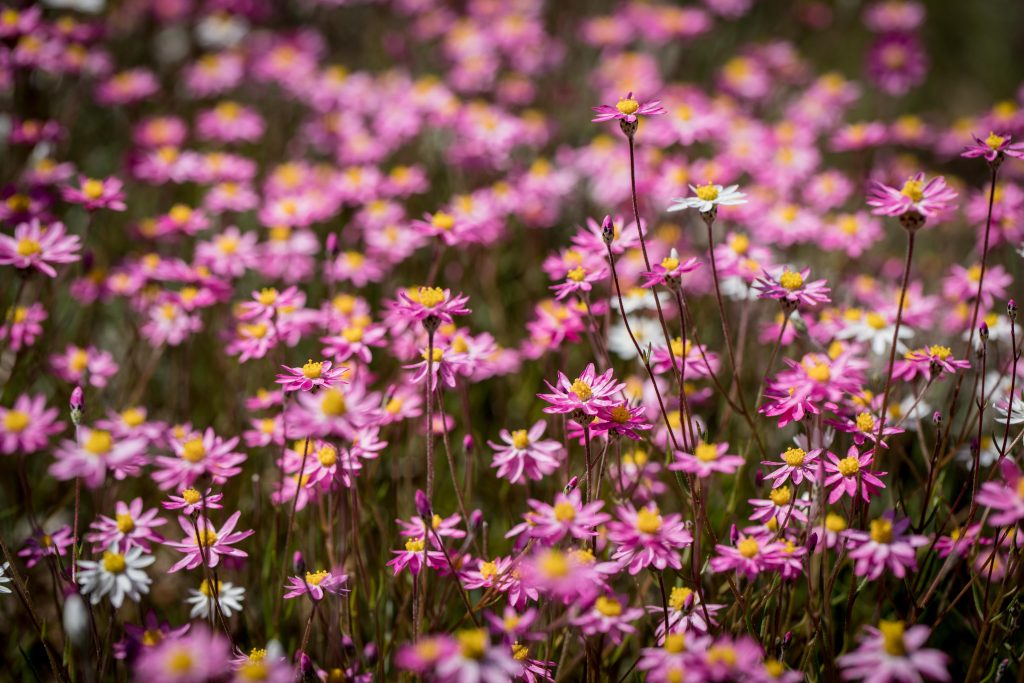Did you know that Nyungar people recognise six seasons? They are; Birak (December and January), Bunuru (February and March), Djeran (April and May), Makuru (June and July), Djilba (August and September) and Kambarang (October and November).
Traditional life depended on knowing the landscape, the food available at certain times, where to find water and shelter. The weather and its influence on the natural environment, in particular the vegetation, dictated so much of everyday life, as opposed to a system set by months.
Still today, Nyungar people mark the changes in the seasons from signals in the landscape, whether it is the changes in the direction in prevailing winds, the flowering of a particular plant species, or a particular time in the breeding cycles of insects, animals and birds.
Plants are particularly important markers for the six Nyungar seasons and the changes between them, and Kambarang season is a really good example of this. Kambarang is called ‘the wildflower season’, or ‘the season of birth’.
During Kambarang, we see an explosion of colour across the landscape! The yellows of many of the wattles (Acacias) continue to abound, along with some of the Banksias and a huge variety of smaller, delicate flowering plants, including the kangaroo paws, Verticordias, Leschenaultias, orchids (kara or djubak) of every colour of the rainbow, and many, many more.
The balgas (grasstrees) will also start to flower at this time, especially if they’ve been burnt or closely shaved recently.
One of the most striking displays of flowers to be seen during this season will be the moodjar (WA native Christmas tree) which flowers across Nyungar boodja from later in October to January. The appearance of the bright orange/yellow flowers of this spiritually significant tree serve to signal the heat is on its way.
This is the time of the year you are most likely to encounter a waakal (python) or yoorn (bobtail lizard), as the reptiles start to awaken from their hibernation and make the most of the warmth for energy to look for food.
It’s also a time when many young birds are singing out for their parents to feed them. Koolbardies (magpies) will still be out protecting their nests and their babies, so don’t forget to duck!
Many things are undergoing transformation with the warm change in the weather and the landscape is alive with colour and noise as a result. It’s a very special time to be out on Nyungar boodja.
Fun Fact!
Plants are often named in Nyungar language for their use or product, as opposed to how they look. So a number of different species may have the same name, as they provide the same thing, usually a food source or medicine. For example, djubak or kara (bush potato) are names for the tubers at the base of our various South West orchid species, whereas the Latin names and European common names for them are numerous and often based upon the appearance of the flower.
Some other things to ponder….
If you’ve been following our Nyungar six seasons posts for a while, you’ve probably noticed that they represent the climate of the south west of WA far more closely than the four seasons recognised by European cultures.
Oh and one more thing! Don’t forget that even though we contextualise the six Nyungar seasons by matching them to the corresponding months in our contemporary calendar, they do not necessarily always match perfectly.
Hope you’ve enjoyed this latest post!















